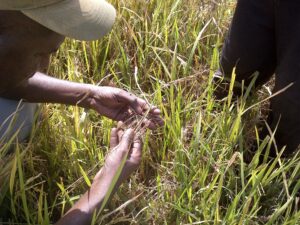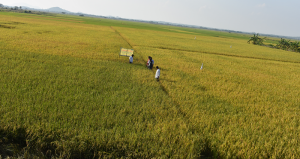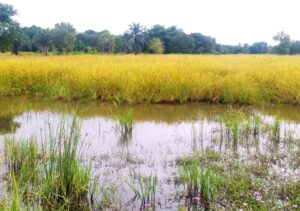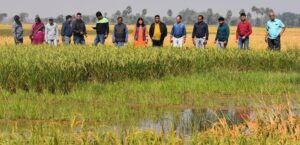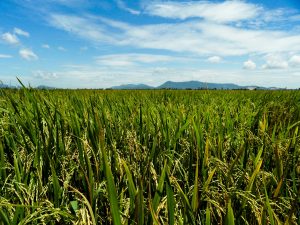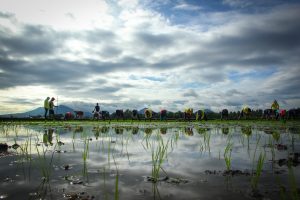
For this issue’s article on bird diversity and wetland conversion (see Balanced on a wing on pages 34–36), Rice Today needed a land cover map of Candaba marsh to compare historical and current conditions and plan a field visit. The only available maps weren’t detailed enough and hadn’t been updated since the mid-1970s, so the IRRI Geographic Information Systems lab used freely available LandSat data from the Global Land Cover Facility at the University of Maryland in the USA.
Because of our interest in vegetation cover, satellite data were reprocessed into false color images that exploit the high infrared reflectance of chlorophyll—the green pigment in plants—to render vegetation patterns.
The image is termed “false color” because the imaging process displays the intensities of red, green, and infrared radiation recorded by satellite sensors as shades of, respectively, green, blue, and red instead (see http://landsat.gsfc.nasa.gov/wp-content/uploads/2013/05/Make-Your-Own-Landsat-Image-Tutorial.pdf). In the resulting image, vegetation is in varying shades of red, water is blue, and bare or fallow areas are light brown.

